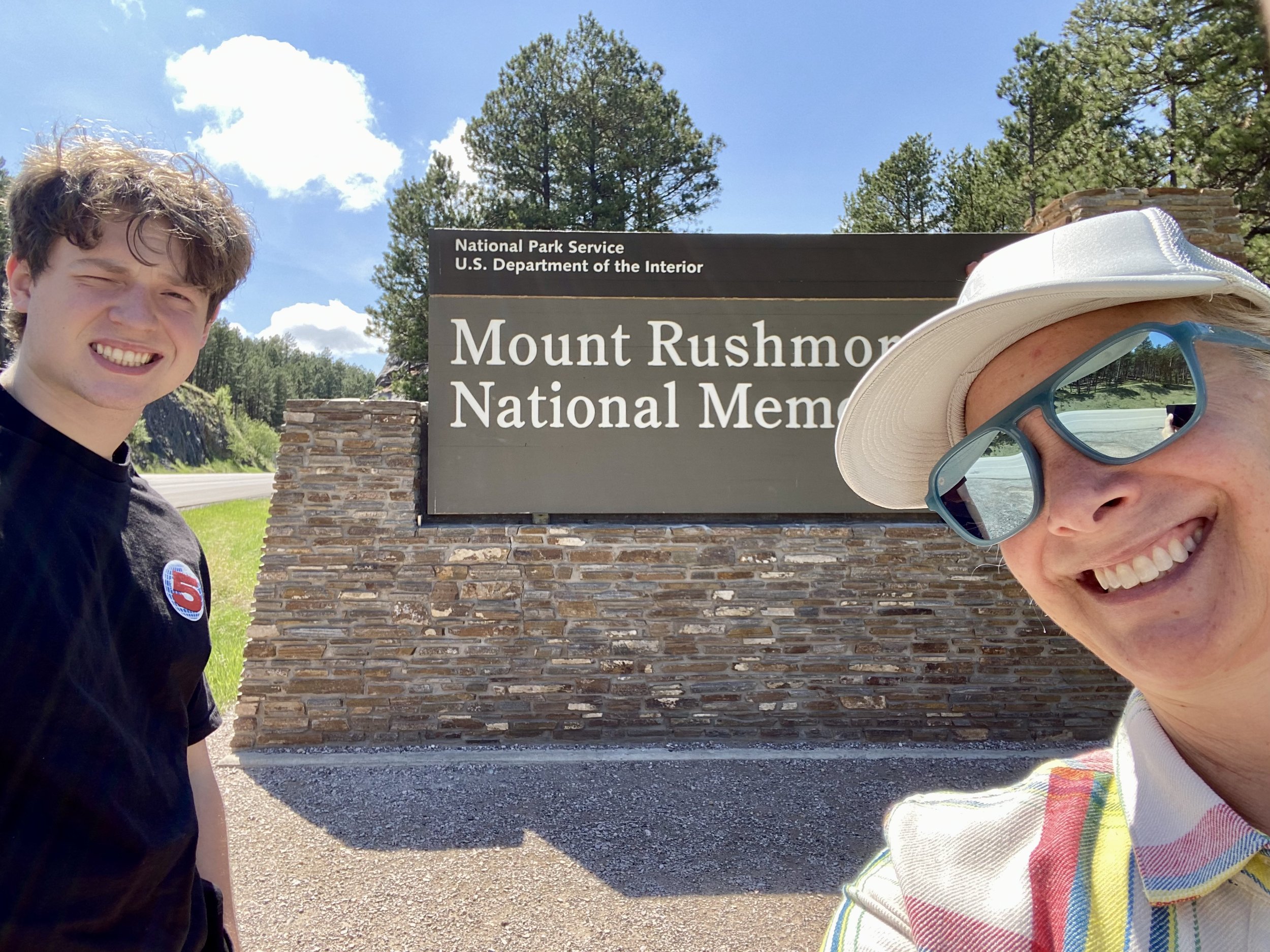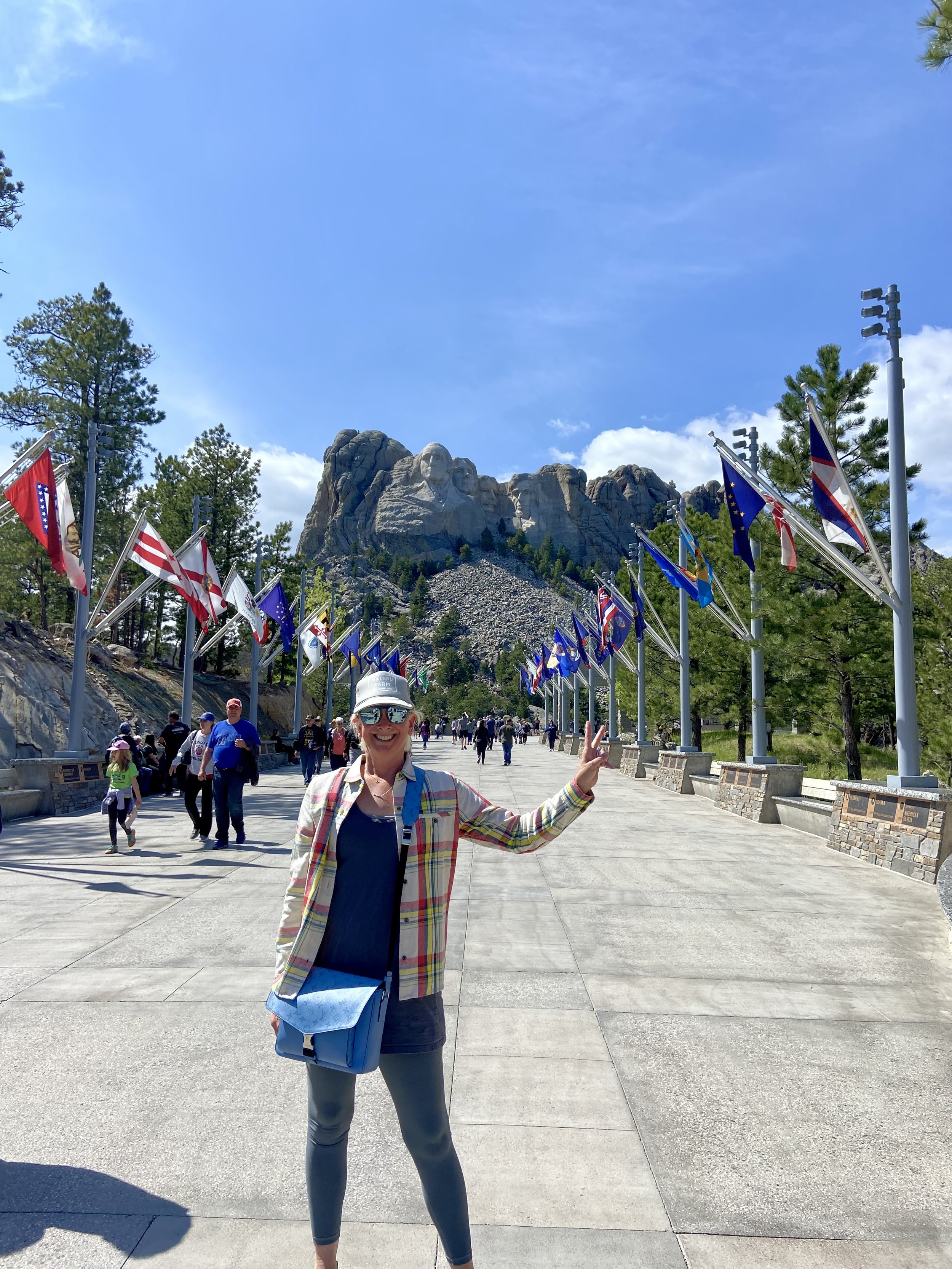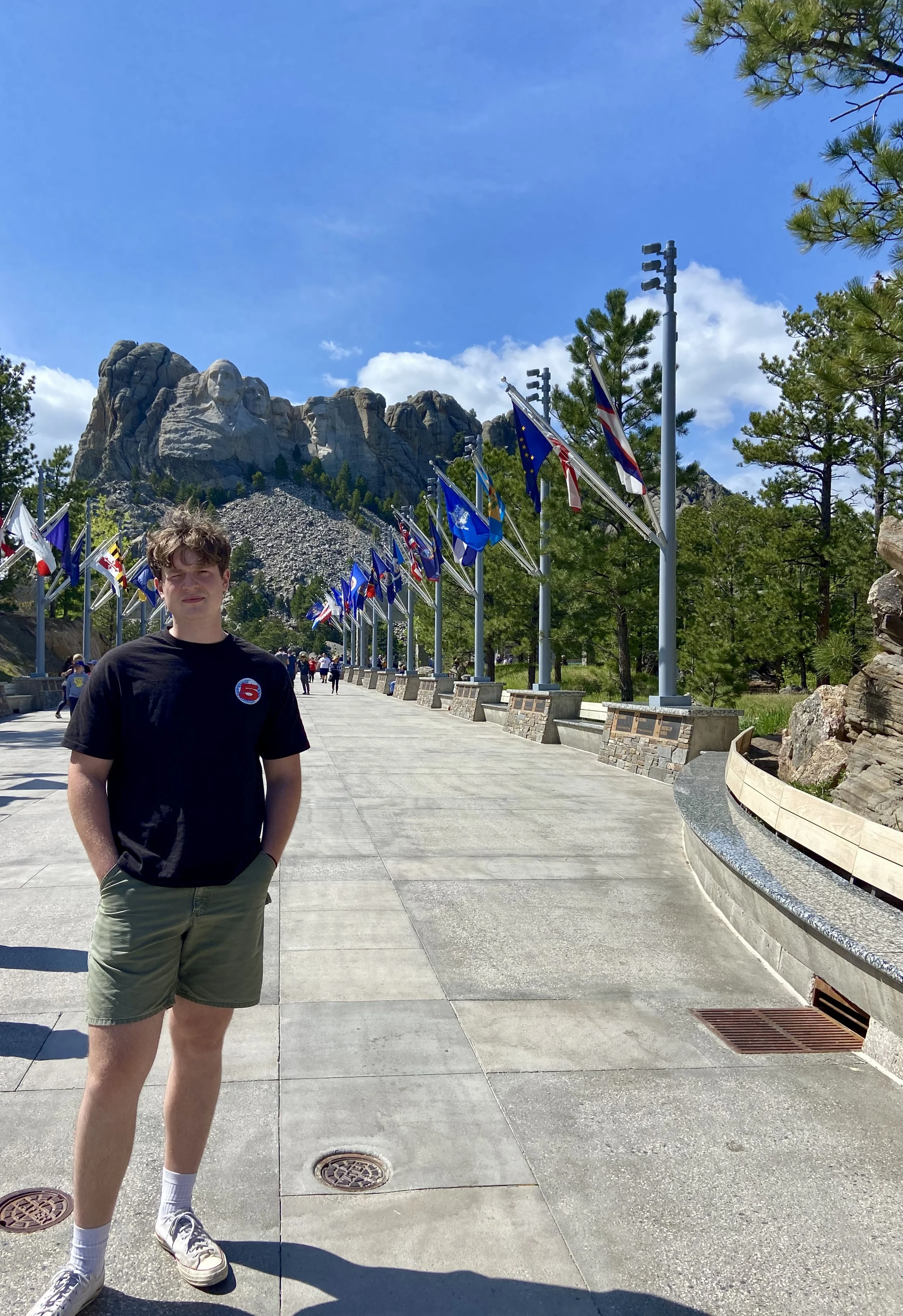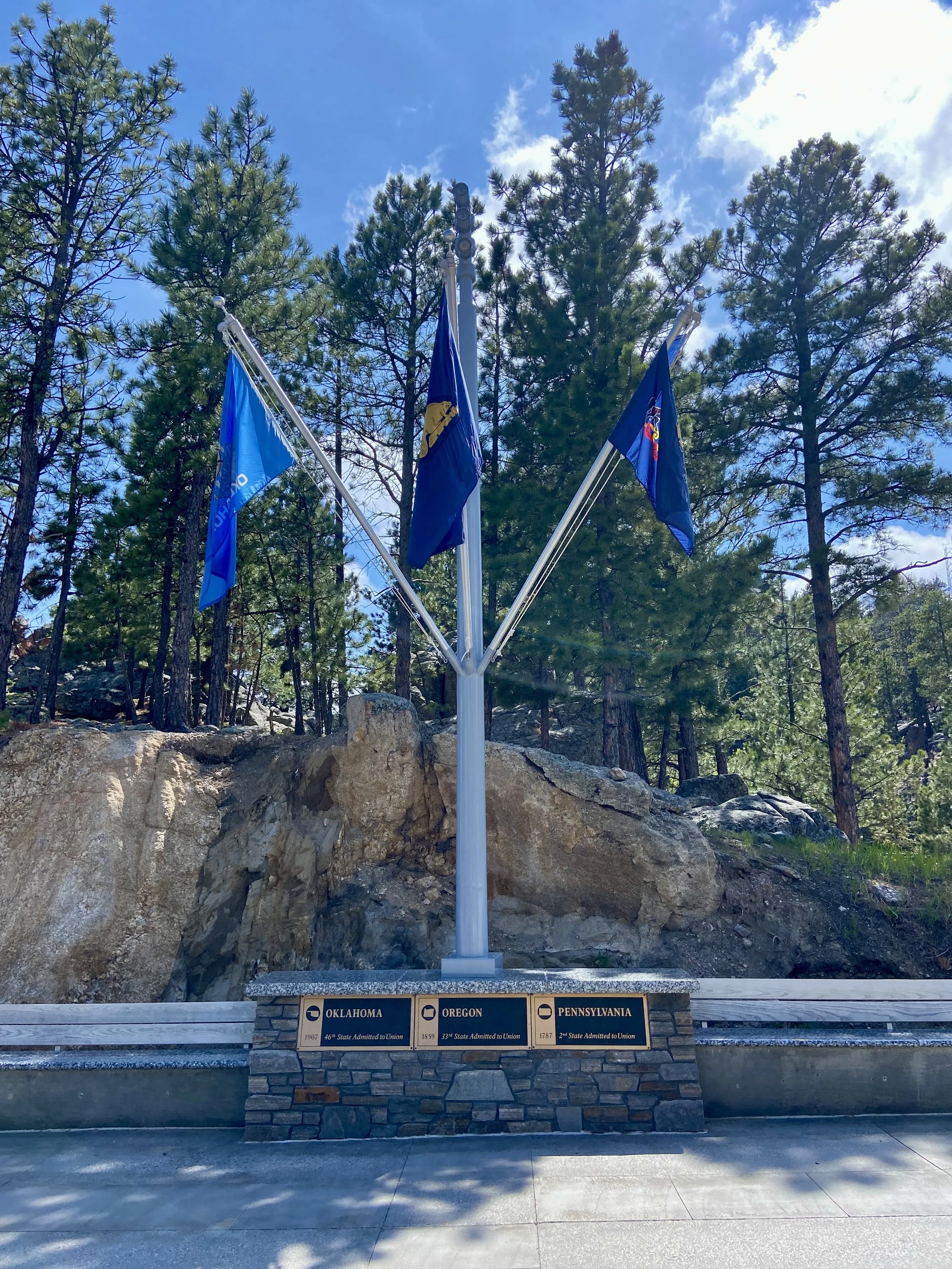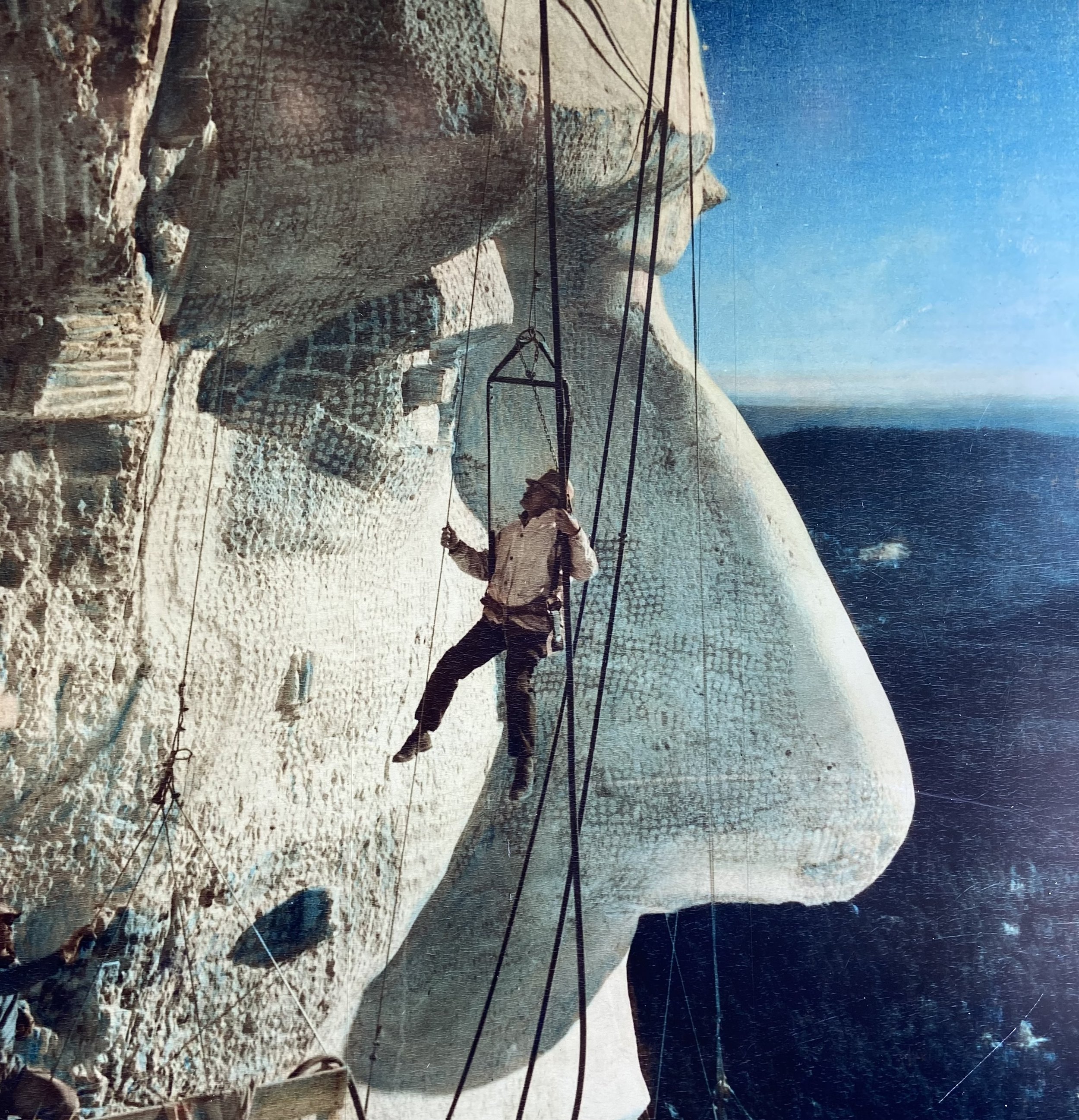Mount Rushmore National Memorial
I have to be honest and say that Mak and I were not very excited to go to Mount Rushmore National Memorial. With so much beauty to see in South Dakota, and the “The heartbreaking, controversial history of Mount Rushmore.” we were merely on a mission to get my stamp. We toured around a bit, bought some Native American postcards and headed out … and onto Crazy Horse Memorial to pay our respects to the Lakota Tribe.
Before it became known as Mount Rushmore, the Lakota called this granite formation Tunkasila Sakpe Paha, or Six Grandfathers Mountain. It was a place for prayer and devotion for the Native people of the Great Plains, explains Donovin Sprague, head of the history department at Sheridan College in Wyoming and a member of the Cheyenne River Sioux Tribe. The mountain’s location in the Black Hills was also significant.
“It’s the center of the universe of our people,” Sprague says. For Lakota, Cheyenne, and Arapaho communities, the region was not only spiritually important, it was also where tribes gathered food and plants they used in building and medicine.
In the late 1800s, Euro-American settlers began pushing into the Black Hills, igniting a war with the indigenous population. The U.S. government signed the Treaty of Fort Laramie in 1868, giving the Lakota exclusive use of the Black Hills. Within a decade, however, gold was discovered in the region and, in 1877, the U.S. broke the treaty and took over the land.
“What happened with the Black Hills is so clearly theft in relation to the U.S.’s own laws,” says Christine Gish Hill, a professor of anthropology at Iowa State University who has investigated the meaning of Mount Rushmore for Native Americans.
After that, settlers and prospectors poured into the region. In 1884, New York attorney Charles Rushmore visited to strike a deal on a tin mine, and, on a lark, Six Grandfathers was renamed after him.
But the land dispute was not resolved. In the 1920s, the Lakota tribes sued the U.S. government for theft—a legal battle that would drag on for decades.
Photo at the Visitor Center.
Sideview on our way to Crazy Horse Memorial.

